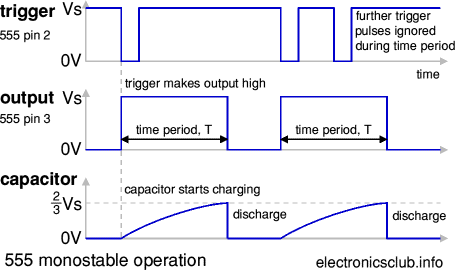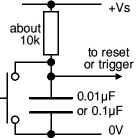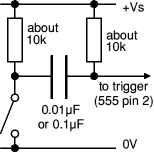If the trigger input is still less than 1/3 Vs at the end of the time period
the output will remain high until the trigger is greater than 1/3 Vs. This
situation can occur if the input signal is from an on-off switch or sensor.
The monostable can be made edge triggered, responding only to changes
of an input signal, by connecting the trigger signal through a capacitor to the trigger input.
The capacitor passes sudden changes (AC) but blocks a constant (DC) signal. For further information
please see the page on capacitance.
The circuit is 'negative edge triggered' because it responds to a sudden fall in the input signal.
The resistor between the trigger (pin 2) and +Vs ensures that the trigger is normally high (+Vs).







